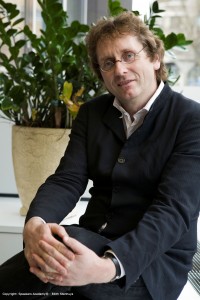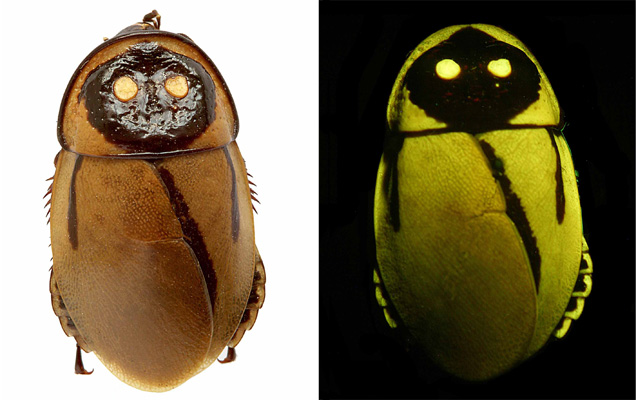The President calls to act – Obama’s climate speech
US-President Barack Obama gave a speech on climate change yesterday. His words could lead to a milestone-process for US climate politics. He made clear that the United States have to play a leading role in the world’s ambitions to tackle global warming.
The plans the president rolled out are foreseeable wide-ranging, including a limit on carbon pollution for the first time in US history.
Emissions need to fall by 17 percent until 2020, the President said. This will “put an end to the limitless dumping of carbon pollution.”
The emissons already dropped last in 2012 on the lowest amount in 20 years. But not for climate security reasons. The moderate economic developement of the United States and the growing use of natural gas (which has an lower amount of carbon dioxide) rather were responsible for the decreasing numbers.
The exact plans
According to the speech he held in Washington, the United States would boost the production of renewable energy, increase efficiency standards and prepare communities to deal with higher temperatures.
So what exactly the president wants to happen?
The energy that is harnessed from sun and wind should be doubled, according to Obama. That makes a power supply for more than six million househoulds in the US. The president also spoke about the highly debated Keystone Pipeline-project, that is planed to transport tar sand-oil from Canada to refineries at the Gulf of Mexico. This pipeline will only be build if it „does not significantly exacerbate the problem of carbon pollution.“
Another point was the building of a new nuclear power plant, the first one in 30 years. In opposition to Germany for example US still count on nuclear power as a green and save source of energy.
Impacts for the private sector
Obamas plans also reach for the private sector as well. Besides a fuel consumption that is now enlarged from cars to trucks the President wants to fight the waste of energy in private homes, public buildings or companies by supporting building insulation or energy saving light sources.
So, the speech offers a lot of plans. But what can be done? Nothing can be established immediatly, there’s always a long process about a few years. And Obamas presidency lasts for three more years. But at least the plans would be put in place through an executive order, bypassing the Congress, which has stalemated over climate legislation in recent years.
During his presentation the audience could literally see what all this is about: The oppressive heat of June often forced beads of sweat on the presidents forehead.
When a glowing cockroach meets a blue-balled monkey
Each year, on the birthday of Carolus Linneaus (also known as Carl von Linné), who was a great Swedish botanist of the 18th century, the International Instiute for Species Exploration at the Arizona State University releases a top 10 list of last year’s new discovered species.
2012 must have been a great year for taxonomists (these guys give the new species their names), because the list offers some very special creatures such as a glow-in-the-dark-cockroach, a comb-shaped sponge or the world’s yet smallest frog.
The ten species have been choosen from a list of 140 nominees that have been take from a list of 18.000 named species in 2012. So are they more important then the others? Of course they are not. But they probably are more able to raise public awareness on the biodiversity crisis then others.
See yourself if it works. The scishow on youtube has done a very fast and funny video about that list which is definitly worth a look.
At least the list is a very welcome change in the usual news reports on the eco-system. Not everything here has to be doomy all the time. But, of course, the habitats of the new discovered species are not automaticly secured. Most of them are already threatend and just a few steps away from extinction.
Read those lists where you find them. They are important.
Copying nature for better flood protection

The Elephant foot plant serves among others as a prototype for flood protection (Photo credit: CC BY 2.0: reibai/flickr.com)
What do a giraffe, an Elephant foot plant and a European Water Vole have in common? What sounds like the beginning of a joke is actually the brainchild of a British PhD student who tried to find innovative ideas for cities facing stormwater.
Due to climate change, such extreme weather events are becoming more frequent. So if nature becomes destructive, why not beat it with its own weapons? That’s what designer Richard MacCowan may have thought – and looked for solutions in nature. He came up with a design proposal for an industral park in flood-prone areas that can “capture, store and distribute excess volumes of stormwater,” Treehugger writes.
Copying nature is known as biomimicry. The most famous example is the lotus effect for protecting surfaces from dirt. Whether this biomimicry approach is feasible or as costly as the protection plans for NYC has yet to be proven.
On location in Rwanda: towering trees and crazy discussions
Modern skyscrapers and people talking to towering trees, irrepressible children who insisted on being in every frame and a heated discussion during a drive – reporter Julia Henrichmann came away with some lasting impressions while filming in Rwanda.
It doesn’t matter where you are in the Rwandan capital Kigali, chances are you’ll always find a moto-taxi (a motorcycle taxi), at your side waiting to drive you through the lush green valleys dotting the city. On the one hand, Kigali is a modern city with skyscrapers, busy streets and crowded shops. On the other, it’s also not unusual to come across pockets where some of the most amazingly large trees and plants find space to grow.
To get a sense of how big the trees are, I asked our driver Ismael to stand next to one I liked very much. He suddenly touched the tree and began talking to it. I asked him why. “Oh,” he said. “This must be a very old one, much older than me so I have to treat it with respect.”
I cannot say whether people are as respectful of nature everywhere in the country. There are many areas in Rwanda where people cut almost every tree for firewood. Gathering firewood is normally done by children. Some don’t go to school because of the long distances they have to walk to get firewood. It’s a problem that’s worsening by some estimates. Firewood is used in homes for cooking because there’s often no electricity. Many use diesel generators.
When we came to the countryside to the district of Nasho, many children wanted to touch me. Most of them had never seen a white person because they had never traveled beyond their district. They were delightful and innocent in a way that I have never seen children elsewhere. Maybe that’s because they did not expect anything from me. All they wanted was that I listen to them and spend some time with them (even though I did not understand their language).
And, of course they wanted me to take photos with them, even during the filming. They walked into every frame! How could we tell them that we just wanted Anastase Tabaro in the film, the man who brought electricity to their village? So we decided to make them part of the film. The villagers’ happiness and pride was palpable as they led us to the little hydro-electrical pump Anastase Tabaro had built for them.
Driving back to Kigali, we had a crazy animated discussion in the car and I became a bit alarmed that the Rwandans would come to blows. So they stopped talking in their native language and switched to English and French for my benefit. And so, what was the big discussion about? What’s the topic that pops up in conversations in Rwanda sooner or later? The genocide.
Even though it happened almost 20 years ago, everybody still talks very much talks about it. Every family here has been affected personally by the tragic event. When you come to Rwanda, you should no longer ask: “Are you a Hutu or a Tutsi?” That’s not the question anymore. The question we argued about in the car was the role of the media during the war and the genocide. Do you as a camera crew film or do you help the victims lying at your feet? During the three-hour drive, we came no closer to any answers. You will probably never find them.
“No need to apologize for being on this planet”
Author: Kerstin Schnatz

Michael Braungart’s concept of zero waste is based on “cradle to cradle” rather than “from cradle to grave”
Photo credit: CC BY 2.0: Debbie(Woodlands Texas)/flickr.com: http://bit.ly/11JY1gl
He’s the man behind a number of quirky inventions – carpets that make the air cleaner, plastics free of toxic chemicals and underwear that can be tossed on the compost heap. What sounds like an eco-dream has already been turned into reality by Michael Braungart. The German chemist, who is professor of process engineering at Leuphana University of Lüneburg (Germany) and founder of the Environmental Protection Encouragement Agency (EPEA), aims to radically change the stuff around us. He offered an insight into his work at a conference hosted by the Heinrich-Böll-Foundation on inventions for a better tomorrow in Berlin on Thursday, June 6.

Michael Braungart, one of the founders of the chemistry division of Greenpeace, wants to “Re-Make the way we make things” with his philosophy of “Cradle to Cradle” (C2C).
Photocredit: Edith Stenhuys
Braungart’s concept “Cradle to Cradle” (C2C) is about reinventing the very composition of products, making pens, office chairs and even diapers really useful, re-usable and non-toxic. It’s a concept that knows no waste at all.
You think that buying organic food, producing less waste or driving a fuel efficient car are a good start for making our world greener? According to the 55 year-old, these choices are downright wrong. “If you hit your child only two rather than five times a day, you are still making a very bad choice.” Braungart says. Just like parents looking for less painful methods of educating their offspring, Braungart wants us to become good consumers. Rather than buying fewer clothes, for example to save on water, chemicals or CO2-emissions, we need to buy smarter apparel, he says. So, clothes that helps our skin breathe better and which can be easily recycled or composted when we don’t need them anymore.
Here’s Michael Braungart’s 2012 talk at TEDx
Unnoticed by most of us, Braungart’s revolution of stuff has already started: From underwear to office chairs and carpets over 1,100 products already carry a C2C label. However, the concept is highly disputed around the world. Even the title of his latest book “The Upcycle: Beyond Sustainability–Designing for Abundance” has raised hackles among many traditional ecologists striving for a more sustainable lifestyle. And his reply to those who want to reduce their CO2 footprint – a trend that many companies have adopted – is devastating: “You can only be carbon neutral if you stop breathing and don’t exist.”
Rather than a zero-emission footprint, he says it’s better to opt for what he calls a “beneficial footprint.” To Braungart, life is not about limiting yourself but about enjoying life – with the right kind of products. After all, he says, there is “no need to apologize for being on this planet.”












Feedback